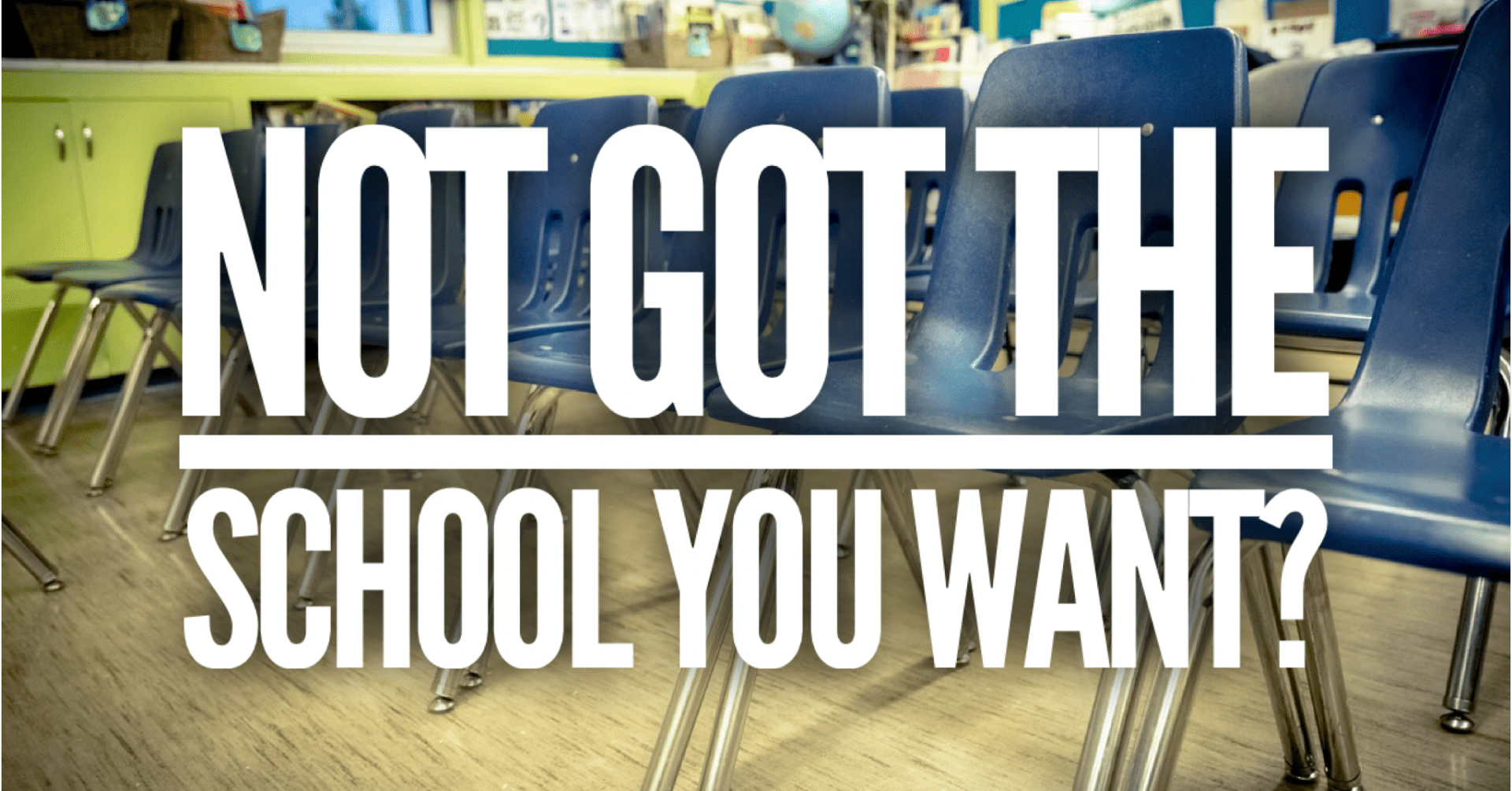Hundreds of thousands of parents will be waiting with anticipation today to find out whether they’ve been given a place at their preferred school. For many, it will be good news but if you don’t get the school you wanted, what do you do? Can you appeal the decision?
Here’s all the info:
What will happen on National Offer Day?
National Offer Day, is today, 16th April 2019. You’ll receive an email, probably during the afternoon stating which school your child has been offered a place at. Parents won’t receive emails at the same time, so don’t worry if your friend has received theirs but you haven’t. Be patient.
If you haven’t heard by the evening, you can log in to the admissions website with your parent ID, username, and password.
Firstly, if you’ve received the news you wanted, don’t forget to accept your place by the 30th April at the latest, otherwise, you could lose the space.
However, if you haven’t received your preferred option, there are 2 main options available to you:
- Accept the place but go on a ‘continuing interest’ list.
- Appeal against the decision.
My child didn’t get a place at our first choice school, now what?
In the email notifying you of your child’s allocated school place, you’ll have full details on how to start the appeal process and the relevant deadlines.
You have the legal right to appeal against a school place decision. To appeal, you have to inform the local authority of your decision to appeal in writing, after which you’ll receive information about an appeal hearing date.
IMPORTANT:
Accept the place you do have!
This won’t affect your chances of getting a school you prefer, whether through appeal or the continuing interest list. It means you have something to fall back on whilst you decide what to do and go through the other processes.
Plus, go to the school you’ve been allocated and have a look round – you never know!
If you turn down the place, you run the risk of having no-where for your child to go to school in September. It is a legal requirement for all children aged 5 and over to be in full-time education.
What is the ‘continuing interest list’ and how do I get on it?
The continuing interest list is the name given to the waiting list system that lets other schools know you still want your child to go there should space become available.
Although, like any waiting list, it’s not guaranteed a space will become available, there can be a lot of movement once everyone has accepted and places have been allocated.
Many people will have since moved out the area or chosen to go down the private education route meaning spaces do come up.
Getting on the list is straightforward. Your child’s name should be on the list automatically for any school that was a higher preference on your application than the school you’ve been offered. (It’s worth contacting your local authority to double check, but this should happen automatically.)
You can also contact the school directly to find out how high up the list you are.
It’s then a waiting game until 14-18th May when the first round of continuing interest lists occurs. It’s here you’ll find out if you’ve been successful.
If not, you can get back on the list on 21st May ready for round 2.
In round 2, you can also add new school preferences. You’ll find out if round 2 has been good to you, or not, on 18-22 June or, at any point over the summer as someone could drop out at any point and you could be the next name on the list.
2 things to keep in mind about the continuing interest list:
- You can move down the list as well as up.
- Accepting the place you’ve been offered does not affect your chances of a waiting list place in any other school.
How do I appeal the decision?
Refer back to the email you received – this will contain all the information to make your appeal. The deadline is 18th May 2018 and be aware that arrangements may differ depending on the school and how it’s managed. Academy’s could be different to local authority schools, for example.
What are the grounds for appealing?
Your appeal will be decided on by a panel who will be looking at a certain number of issues:
- The lawfulness of the admission arrangements
- If a mistake was made in not offering your child a place
- If it was unreasonable to refuse your application
When you’re at your appeal hearing, check the school’s admissions policy carefully before you go and take with you and documents that support your argument as to why your child should get their preferred choice.
IMPORTANT:
You need to build a case for why your child SHOULD get a place at their preferred choice rather than why they shouldn’t attend the school they’ve been allocated.
How does the appeals process work?
You will be given at least 10 days notice of your appeal hearing and must be heard within 40 school days of the deadline for making an application.
There will be an independent panel of 3 people at the hearing. Here’s what the hearing might look like:
- The admission authority (usually the school itself or the council) will explain why they turned down your application.
- You’ll be able to share your own reasons for why your child should be admitted.
- The panel will decide if the school’s criteria were followed and are legal according to a school admissions appeals code.
- If they were followed correctly, the panel will then decide they were followed fairly and thoroughly.
- If the criteria weren’t followed properly or are illegal, your appeal will be successful.
What happens after the hearing?
The panel will decide whether you or the school have the strongest case. You’ll be notified of their decision within 5 working days.
If you’re unsuccessful you can’t appeal again, but you can still add your child’s name to the continuing waiting list.
What happens if my appeal is unsuccessful?
You do have a couple of alternative routes to look at.
- You can complain to the Ombudsman but only if there was a procedural error. Find out more at the Local Government Ombudsman website.
- You could look at private education or home education.








